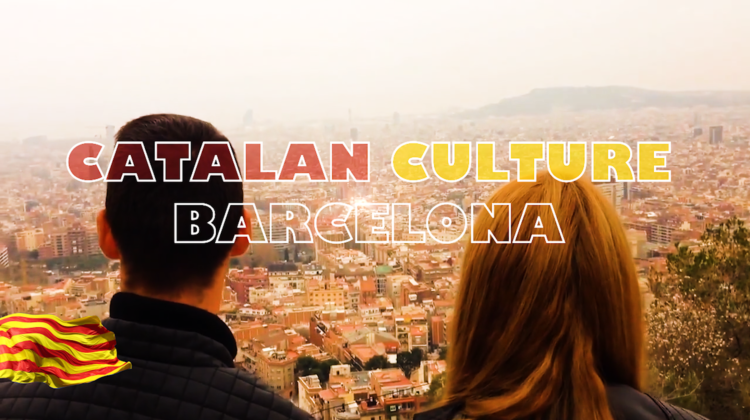Catalonia (Catalunya in Catalan)
Catalonia is a thriving region in the north-east of Spain. From quaint medieval villages and rocky beach coves, to the energetic metropolitan city of Barcelona, it teems with possibilities. The region prides itself on its Catalan culture and language, which you can see everywhere from its festivals and its literature to its schools. Take a look at our quick guide to the region to get yourself more acquainted with this unique part of Spain.
La Senyera
The name of the official Catalan flag is La Senyera. Legend has it that during a battle against the Moors in the 10th century, the Catalan Count Guifré el Pilós, or ‘Wilfred the Hairy’ was fatally wounded. The Frankish ruler fighting the Count, Carles el Calb or Charles the Bald needed something to inspire their army, so he used the blood from the Count’s wounds to create the stripes of maroon on his golden shield. Because of this, the four stripes are known as the ‘Els Quatre Dits de Sang’ or ‘The Four Fingers of Blood’.
Catalan Language
In Catalunya, Catalan, along with Spanish, is an official language. It’s common to hear people speaking Catalan in the streets, see signs in Catalan and hear announcements, even before they are said in Spanish. Schools teach in Catalan as the primary language and Spanish or Castellano is taught as a second language. It’s the locals’ personal preference or family heritage as to whether they speak in Catalan or Spanish, but they will generally speak in Castellano or English to visitors. Catalan is not a dialect of Spanish, it is actually its own language, and also has influences from other Romance languages such as French and Italian.
Catalan culture: Day of Sant Jordi
Catalunya celebrates the same patron as England, Saint George, on the 23rd April each year. Traditionally roses are given on this day, as legend has it that when Sant Jordi killed the dragon, a rose grew from the spot where its blood was spilled. The day also coincides with World Book Day, as both Shakespeare the the famous Spanish author Cervantes died on this day. Because of this, books are also given as gifts on Sant Jordi day. Rose and book stalls can be seen set up all over the city, and it is said that this rose fair dates all the way back to the 15th century.
Catalan culture: Castells
Castells (castles) are human towers, and a strong part of Catalan tradition. During festivals, teams of different castellers from different areas of the city will compete to see who can make the tallest tower. It’s usually the young children who are given the job of reaching the top, due to their weight and nimbleness.
Catalan culture: Sardanas
Symbolising a united community, the Sardana folk dance is an important part of Catalan culture as it joins people together to dance in a circle. A combination of short and long steps are traditionally complemented by the sound of the cobla (a traditional musical ensemble).
The dance speeds up and slows at intervals, providing a mesmerising show. The national dance grew even more in popularity since it was performed at Barcelona’s La Mercè Festival in 1902.
Catalan culture: Correfoc
The Correfoc (Fire run) is a spectacle of devils, pyrotechnics and grotesque monsters. During the event, hooded diables (devils) run down the street spurting fire into the crowds, and often wheel large dragons or monsters with them.
The festival was originally influenced by Corpus Christi processions, in which biblical characters of good and evil, were theatrically represented. Today, the tradition is performed during many of Catalunya’s most famous festivals.






